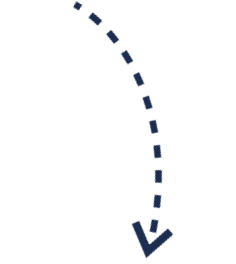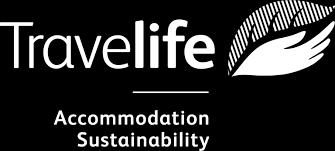Categories
- Accommodation
- Accommodation at Kibale Forest
- Budget accommodation at Kibale
- Budget accommodation in Uganda
- Budget Hotels in Entebbe
- Budget Murchison Falls Accommodation
- Bwindi Guides
- Bwindi National Park Guides
- Entebbe Hotels
- Exclusive Lodges In Murchison Falls National Park
- Exclusive Lodges in Queen Elizabeth National Park
- High End Accommodation At Kibale
- Kibale
- Luxury accommodation at Kibale
- Luxury Accommodation in Queen Elizabeth National Park
- Luxury Hotels In Entebbe
- Luxury Murchison Falls Accommodation
- Midrange accommodation at Kibale
- Midrange Hotels In Entebbe
- Midrange Murchison Falls Accommodation
- Murchison Falls Guides
- Murchison Falls Lodges
- News
- Popular
- Queen Elizabeth Guide
- Queen Elizabeth National Park Accommodation
- Semi-Luxury Entebbe Hotels
- Travel Guide
- Uganda Honeymoon Lodges
- Uncategorized
3 Days Uganda Tours & Gorilla Treks
Uganda offers so much scenic variety and wildlife diversity, making it one of Africa’s top safari destinations.
Planning a 3-day safari in Uganda can be challenging—not because of a lack of options, but because there are so many incredible highlights to choose from. For travelers with gorilla trekking at the top of their bucket list, the decision is simple.
Bwindi Impenetrable Forest National Park and Mgahinga Gorilla National Park are the most accessible and budget-friendly places in Africa to see wild mountain gorillas. Both national parks are perfect for a 3-day Uganda safari and promise an unforgettable adventure.
But Uganda has much more to offer beyond gorillas.
You can go chimpanzee trekking in Kibale Forest National Park, embark on a Big Five safari in Murchison Falls National Park, or enjoy a combination of wildlife, waterfalls, and cultural experiences. Here, we explore the pros and cons of each option to help you design the ultimate 3-day Uganda tour.
Best 3 Day Uganda Tour Packages

3 Days Uganda Safaris FAQs
Is 3 days enough time to see gorillas in Uganda?
Yes, 3 days can be enough for gorilla trekking in Uganda, though it’s the minimum time required if you’re traveling by road from Kampala (the capital) or Entebbe (home to the main international airport).
The drive to Bwindi Impenetrable Forest or Mgahinga Gorilla National Park takes at least 10 hours, so you’ll need to spend one night at a lodge near the trekking trailhead before or after your gorilla visit.
While a 3-day road safari is doable, it can be quite rushed due to the long travel times. If you prefer to avoid spending nearly two full days driving, consider flying to the parks, which is faster but more expensive.
Alternatively, you could extend your itinerary to include nearby attractions like Queen Elizabeth or Kibale National Parks.
Many Uganda gorilla safaris also start and end in Kigali, Rwanda, because the drive to Bwindi or Mgahinga is shorter (3–6 hours, depending on the trekking site).
Another advantage is cost: gorilla trekking permits in Uganda are significantly cheaper at US$800 per person, compared to US$1,500 in Rwanda.
Where should I go on a 3-day Uganda Tour?
Gorilla trekking in Bwindi Impenetrable Forest or Mgahinga Gorilla National Park is the most popular choice for a 3-day safari in Uganda, but it is far from the only option.
If your dream is to see the Big Five, a classic itinerary combines two nights in Murchison Falls National Park with a stop at Ziwa Rhino and Wildlife Ranch to track white rhinos.
Murchison offers an unforgettable boat cruise to the base of the falls along the Nile, where hippos, crocodiles, and countless bird species thrive.
On game drives across the northern savannah, it is common to see elephants, buffalo, and giraffes, with good chances of spotting lions and, occasionally, leopards.
Queen Elizabeth National Park is another savannah destination worth considering. It is home to elephants, buffalo, lions, hippos, and the famous tree-climbing lions of Ishasha. That said, Queen Elizabeth is best combined with nearby Bwindi on a longer safari rather than as a stand-alone 3-day trip.
For travelers eager to see great apes but who find gorilla permits beyond their budget, Kibale Forest National Park offers superb chimpanzee trekking. The park is also known for its scenic crater lakes and a rich variety of monkeys and birdlife, making it a rewarding alternative.
If wildlife is not your main focus, Uganda also caters to adventure seekers. A short but action-packed itinerary could take you to Jinja, the adventure capital of East Africa, for white-water rafting on the Nile, before continuing to the breathtaking Sipi Falls on the slopes of Mount Elgon.
Whether your passion lies in tracking gorillas, watching chimps in the wild, exploring the savannah in search of lions and elephants, or chasing adrenaline on the Nile, Uganda offers the perfect 3-day safari experience for every type of traveler.
What Kind of Accommodations Can I Expect?
Uganda offers a wide range of accommodations to suit every taste and budget.
For travelers looking to keep costs down, camping is the most affordable option, with organized campsites available in and around most national parks and popular attractions.
For a step up in comfort, there are numerous mid-range lodges and tented camps that provide warm hospitality, cozy rooms, and authentic safari experiences without breaking the bank.
At the luxury end of the spectrum, Uganda boasts some of East Africa’s finest lodges, blending world-class service with stunning locations and elegant “bush chic” design.
Many of these lodges feature panoramic views, eco-friendly architecture, and personalized touches that make your stay truly memorable.
No matter which category you choose, most safari accommodations in Uganda operate on a full-board basis, meaning your meals are included.
Whether you’re camping under the stars, relaxing in a tented camp, or indulging in luxury, you can count on comfort, hearty meals, and warm Ugandan hospitality throughout your journey.
What is the best time of the year for a safari in Uganda?
The best time to go on safari in Uganda is during the two Dry seasons—from June to August and December to February.
These months offer the most reliable travel conditions, with plenty of sunshine and easier wildlife viewing as animals gather around water sources.
September and October are also generally good months to visit, though they fall just outside the main dry spells.
Travel becomes more challenging in the long rainy season (March to May), with April being the wettest month in much of the country.
Heavy rains can make trekking trails muddy and slippery, especially in gorilla and chimpanzee habitats, and storms may occasionally disrupt activities.
That said, rain is less of a concern in the savannah parks such as Murchison Falls or Queen Elizabeth, where wildlife viewing is still possible year-round.
In short, while Uganda is a year-round destination, the dry months offer the most comfortable and rewarding safari experience—particularly if gorilla or chimpanzee trekking is on your itinerary.
How much will a 3-day Uganda safari tour cost?
The cost of a 3-day Uganda safari varies widely, typically ranging from US$650 to over US$2,500 per person.
This usually includes park entry and activity fees, accommodations, meals, transport, and the services of guides and drivers. The exact price depends on the type of safari, level of comfort, and activities included.
The biggest factor is whether your itinerary involves gorilla trekking. A trekking permit alone costs US$800 per person, which means the most affordable 3-day gorilla safari usually falls between US$1,450 and US$1,800 per person.
By comparison, a 3-day budget safari to destinations such as Murchison Falls National Park is much cheaper, generally costing around US$600 to US$900 per person.
Other factors that influence the total price include the standard of accommodation you choose—ranging from budget camps to luxury lodges—and whether you opt for domestic flights instead of long road transfers.
In short, Uganda offers 3-day safari options for every budget, from affordable wildlife adventures to exclusive gorilla trekking experiences.
Your Story Begins Here
Contact Us Today and See Where it Takes You
Our Trusted Partners






